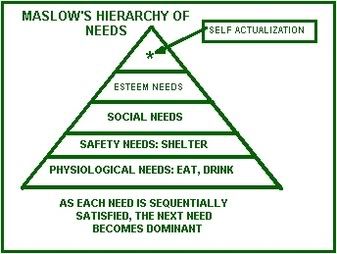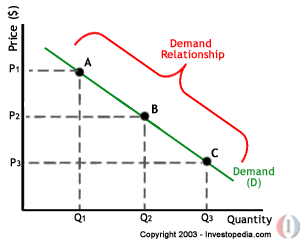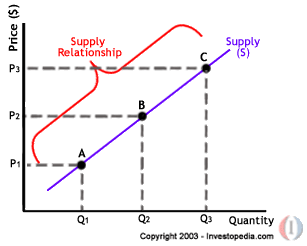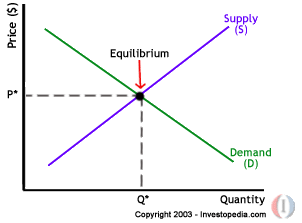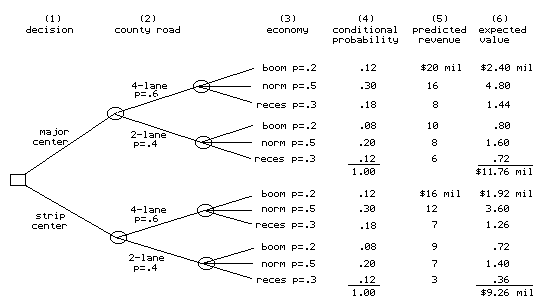Mergers and Acquisition
Mergers and Acquisition Defined
Mergers and acquisitions fall under the broad category of business combinations. A business combination is defined as the union of two or more enterprises as one entity, accompanied by changes in the corporate ownership structure in one or more of the enterprise or the uniting of statutory interests of two or more enterprises.
Section 76 of the Corporation Code of the Philippines (CCP) defines a merger as the union of two or more corporations where one company survives and continues to operate while the others are absorbed by the surviving entity. Larsen calls this a statutory merger. An example of this type of business combination is the merger between Union Bank of the Philippines (Unionbank) and the International Corporate Bank, Inc. (Interbank) in May 1994. As a result of the business combination, Interbank was dissolved while Unionbank became the surviving company.
Section 76 of the CCP also defines a consolidation as the union of two or more companies resulting in the formation of a new corporation and the absorption of all the constituent companies by the new company. Larsen calls this type of business combination a statutory consolidation. The business combination of Brown Chemical Corp. and Brown Chemical Sales Corp. in June 1993 is an example of a statutory consolidation. The two companies were dissolved and a new corporation, Epic Holdings Corporation, was formed. The name of the corporation was later changed to A. Brown Company, Inc. which was listed in the stock market in February 1994.
Acquisition may be only slightly different from a merger. In fact, it may be different in name only. Like mergers, acquisitions are actions through which companies seek economies of scale, efficiencies, and enhanced market visibility. Unlike all mergers, all acquisitions involve one firm purchasing another--there is no exchanging of stock or consolidating as a new company. Acquisitions are often congenial, with all parties feeling satisfied with the deal. Other times, acquisitions are more hostile.
In an acquisition, as in some of the merger deals we discuss above, a company can buy another company with cash, with stock, or a combination of the two. Another possibility, which is common in smaller deals, is for one company to acquire all the assets of another company. Company X buys all of Company Y's assets for cash, which means that Company Y will have only cash (and debt, if they had debt before). Of course, Company Y becomes merely a shell and will eventually liquidate or enter another area of business.
Another type of acquisition is a reverse merger, a deal that enables a private company to get publicly-listed in a relatively short time period. A reverse merger occurs when a private company that has strong prospects and is eager to raise financing buys a publicly-listed shell company, usually one with no business and limited assets. The private company reverse merges into the public company, and together they become an entirely new public corporation with tradable shares.
REASONS FOR MERGERS AND ACQUISITIONS
There are many possible reasons why companies desire to combine with other entities. Operational and/or financial synergy, an increase in or protection of market share and market power, diversification and the economies of vertical integration are some of the possible reasons. Other more pragmatic reasons such as the compression of the time required to list a company have been in vogue in the country recently.
Operational and/or Financial Synergy
Synergy is the magic force that allows for enhanced cost efficiencies of the new business. Synergy takes the form of revenue enhancement and cost savings. By merging, the companies hope to benefit from the following:
• Staff reductions - As every employee knows, mergers tend to mean job losses. Consider all the money saved from reducing the number of staff members from accounting, marketing and other departments. Job cuts will also include the former CEO, who typically leaves with a compensation package.
• Acquiring new technology - To stay competitive, companies need to stay on top of technological developments and their business applications. By buying a smaller company with unique technologies, a large company can keep or develop a competitive edge.
• Economies of scale - Yes, size matters. Whether it's purchasing stationery or a new corporate IT system, a bigger company placing the orders can save more on costs. Mergers also translate into improved purchasing power to buy equipment or office supplies--when placing larger orders, companies have a greater ability to negotiate price with their suppliers.
Increase in or Protection of Market Share
Companies buy companies to improved market share and industry visibility, to reach new markets and grow revenues and earnings. A merge may expand two companies' marketing and distribution, giving them new sales opportunities. A merger can also improve a company's standing in the investment community: bigger firms often have an easier time raising capital than smaller ones. For instance, some institutions would not want to deal with small banks because small banks may be considered ‘high risk.” One way of addressing the competitive disadvantage of small banks is through mergers. Unionbanks’ growth accelerated after its merger with Interbank was consummated.
Diversification
One way of minimizing the risks of the company’s operations and/or stabilizing the flow of a firm’s earnings and its cash flows is through diversification. Diversification lessens the dependence of the company’s current and future income on any industry and mitigates the impact of troughs of the business cycles in one industry by acquiring an entity in another industry with a different business cycle.
Diversification is often used to justify mergers and acquisitions. Many holding companies see opportunities in industries such as telecommunications which is perceived to have good prospects for sustained growth. The telecommunications business thus offers the potential for a steady flow of income, in contrast to the cyclical behavior of other consumer products.
Economies of Vertical Integration
A vertical merger results when a company merges with its suppliers or customers. A merger with a supplier is referred to as backward integration while a merger with a customer is forward integration. There is a vertical merger (backward integration) when foe example, a company that produces cement acquires another company that produces cement bags. Vertical integration with the supplier can be a motive for acquiring a company to ensure the quality and the supply of inputs for production. A merger with a customer generally seeks to improve the distribution and the marketing of a company’s products.
VALUATION OF THE TARGET FIRM
The valuation of the target firm requires a deep appreciation of the factors that affect not only the post-merger operations of the target firm, but also the combined operations of the target firm and the acquiring firm. While in theory, value may be created by the merger, e.g., synergy, such value will depend on the implementation of the merger plans. The acquiring firm is also not assured of extracting the theoretical gain if it ends up paying too high a price for the target firm. This makes the valuation of the target firm one of the most critical issues in the exercise.
There are essentially two approaches to the valuation problem:
a. the existing assets can be valued at their current values and the net value of the firm determined by deducting all liabilities; or
b. the future cash earnings of the target firm are projected and discounted at an appropriate rate.
In practice, a combination of the two is usually arrived at during the final negotiations.
The Audit Process
In determining the value of the target firm, the acquiring firm conducts a “due diligence audit of its accounts and operations. The audit team is usually composed of finance, accounting, technical and legal staff chosen by the acquiring company and an independent appraisal firm acceptable to both parties. The review is designed to give the acquiring firm a reasonable basis for determining the soundness of the target firm’s financial statements and the reasonableness of projections of its future cash earnings. Given these objectives, the audit should at least cover the following:
1. assessment of realizable values of current assets such as receivables, inventories and repayments;
2. appraisal of fixed assets, a listing of the nature of encumbrance on such properties, the efficiency and capacities of equipment and plant facilities and adequacy of operating systems;
3. review of pension fund and tax liabilities;
4. review of Board minutes and major contracts such as loan documents, collective bargaining agreements, if any, etc., which may affect the merger/future operations or indicate the existence of unrecorded/contingent liabilities;
5. review of regular audit findings and the adequacy of accounting records, internal control and information systems;
6. review of market trends and competition, and marketing and distribution systems, where applicable; and
7. review of labor-management relationships and overall employee morale.
Valuation Process
To determine the net asset value (NAV) of the company, an independent appraiser may be hired to determine the fair market values of the various assets and liabilities of the target firm. After determining the net asset value of the company, qualitative factors may have to be considered, which could result in a discount or premium over the NAV of the target firm. For instance, the potential effects of the firm on the acquiring company’s present operations must be considered.
The other way of setting the price for a target firm is through the use of capital budgeting. Under this method, the incremental cash flows from the target firm must be estimated and discounted at the appropriate cost of capital.
In determining the incremental cash flows, factors such as the potential effect of the acquisition on the acquiring firm’s own operations must be considered. The acquisition of a target firm may result in operating synergies that increase revenues and lower operating costs, e.g., because of economies of sale. Such effects must be considered in determining the incremental cash flows from the target firm. Again, similar to the qualitative factors previously mentioned, the opportunity cost of not acquiring the target firm must be considered.
The nature of the business of the target firm, the objectives of the acquiring company, and the number of other potential acquirers and their competitive strengths will be critical considerations in setting the price. Sensitivity analysis should give the management of the acquiring company some idea as to maximum offer the competitors can give and the maximum price the acquiring company can offer to ensure a successful bid. It is at this point where the proper appreciation of the issues at hand by the management of the acquiring company is most critical. Failure to do so can lead to far reaching consequences that may be hard to reverse.
Both NAV and capital budgeting methods can be used in setting the price for the target firm. However, for acquiring companies whose main objective is just to acquire a listed firm, the net asset value method may not apply. In this case, the acquiring company’s primary interest is a backdoor listing, and not the net asset value of the target firm. The capital budgeting technique for this type of acquisition is generally applicable since the savings on registration and listing costs are readily identifiable and quantifiable.
FINANCING SCHEMES FOR ACQUIRING THE FIRM
There are different ways of carrying out mergers and acquisitions. Some mergers and acquisitions are carried out through a cash purchase, an exchange of assets, or through leveraged buyouts. Many mergers and acquisitions in the Philippines however, are carried out through stock swaps. Some involve combinations of cash and an equity swap. Convertible bonds can also be used to finance mergers and acquisitions.
Cash Purchase
Under this method, the acquiring firm simply pays the existing stockholders cash in exchange for the shares of the company. This is the case for subsidiary mergers.
Leveraged Buyouts
A leveraged buyout (LBO), as the term implies, involves the heavy use of debt to finance an acquisition. The management-led group borrows heavily against the firm’s assets, using so-called “junk bonds”. These are high risk (below investment grade) but high yield bonds issued to finance the buyout.
Equity Swap
This is one of the most common mean of carrying out mergers and acquisitions in the Philippines. Under this scheme, the acquiring company issues its own shares in exchange for the shares of the companies being acquired. Sometimes, the acquiring company’s shares of other companies are used to carry out the merger or acquisition.
Combination of Cash and Equity
Some mergers and acquisition are carried out through a combination of cash purchase and equity swap.
Issuance of Convertible Notes
Some companies finance mergers and acquisitions through the issuance of convertible notes. These notes may be converted to equity shares at some time in the future.
LEGAL AND TAX CONSTRAINTS ON THE MERGER STRUCTURE
The structure of a business combination sometimes depends on two factors: (a) the length of time within which the combination can be affected, and (b) tax implications.
A true merger usually entails an arduous process which may take a year or more to complete. The two corporations involved are required by the SEC to submit documents for its review. These documents range from minutes of the Board of Directors’ and stockholders’ meetings approving the merger plan to a long-form audit report of both companies. Because delays in the merger process cost time and money in terms of exploiting the business synergy and in terms of reduced employee morale, most corporations opt for the acquisition of shares method.
The exchange for shares of stock of the acquiring firm is non-taxable and results in a de facto merger. Alternatively, the acquisition by one firm of substantially all of the properties of another firm solely for stock is also a tax exempt transaction. Where the exchange is not solely for stock, the transaction becomes taxable on the part of the target firm and its shareholders. It is therefore advantageous for the latter to deal with a listed company whose shares can offer liquidity rather than require payment other than stock.
ACCOUNTING FOR MERGERS AND ACQUISITIONS
There are two accounting methods used for business combinations. These are the purchase method and the pooling of interest method. Based on the Statement of Financial Accounting Standards No. 20, the purchase method accounts for the business combination is the acquisition of one enterprise by another. Hence, the acquiring company records at cost the assets and liabilities acquired. If the cost of the acquiring company is higher than the fair market values of the tangible and intangible assets acquired less liabilities, the difference is charged to goodwill.
The pooling of interest method accounts for a business combination as the union of the ownership interests of two or more companies through an exchange of equity shares. Under this method, the assets and liabilities of the companies acquired are recorded at their historical cost, in contrast to the purchase method which records assets and liabilities at their fair market values. In the case of subsidiary mergers where the acquired company is not dissolved, the assets and liabilities are still recorded at cost. However, when financial statements are consolidated, these assets and liabilities are adjusted to approximate their fair market values at the time the business combination was consummated. These adjustments do not have any tax effects.

